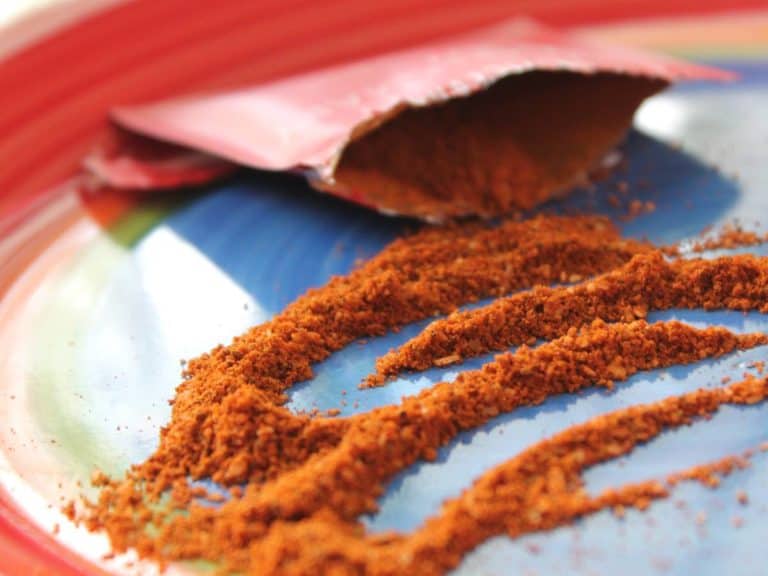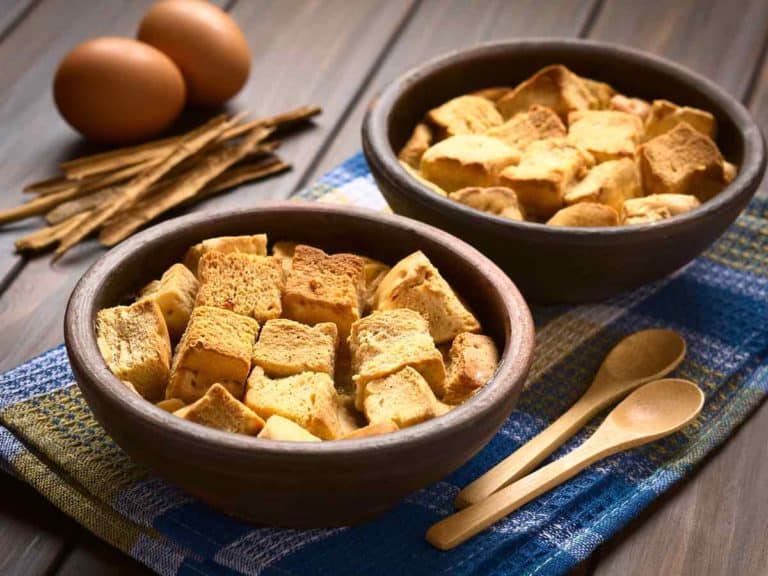Top 10 Substitutes for Chinese Cabbage
If you love green and crisp nutritious food, then Chinese Cabbage can be perfect for your stir-fried vegetables or salads.
Chinese cabbage came from the Brasicca Rapa group which is a cultivated plant from the Pekinesis group (Nappa Cabbage) and Chinensis (Bok Choy). But since Chinese Cabbage is not always readily available, there are other substitutes you can try.
There are varieties of cabbages, and greens similar to Chinese cabbage like Savoy Cabbage, Green Cabbage, Red Cabbage, Bocho, Brussel Sprouts, Kohlrabi, Choy Sum, Celery, Kale, and Romaine Lettuce. All of these are nutritious and can be regularly available in grocery stores.
Let’s check out these 10 Chinese Cabbage Substitutes that are rich in nutrition!
Savoy Cabbage
Savoy Cabbage is a spherical-shaped vegetable that comes from the Brassica family. Like the Chinese cabbage, it has wrinkled and laced leaves. It is rich in fiber, which helps in digestion, and has protein, Vitamin C, Iron, Vitamin B, Calcium, and Magnesium.

It is a winter vegetable, which typically survives the extremely cold temperatures. It has a mildly sweet and earthy flavor, and be cooked and eaten raw. It has a frilly structure and deep-green leaves, which is perfect for salads. Its flavor complements grilled pork meat or roasted chicken.
Named after a region in France, Savoy Cabbages have mild flavors. Its wide leaves can be used as wraps for enchiladas or cabbage rolls. However, unlike the other cabbages, Savoy cabbage has a firm texture, which makes it crisp even when cooked.
Like the Chinese cabbage, it can be fermented and used to make kimchi and sauerkraut. Savoy cabbage reaches its peak from October to February and is widely available especially in Europe.
It can be used to make vegetarian Haggis and mixed with pasta. It can last from one to six weeks in the refrigerator if stored correctly.
Green Cabbage
Green Cabbage is a spherical green or pale leafy vegetable. Like the Chinese cabbage, it is part of the Brassicaceae family. It has a rubbery soft texture and mildly sweet taste when cooked, and when eaten raw, it has a slight peppery flavor.
This can be used to make pickled cabbage and savory green salads. It can be sauteed in olive oil with your preferred spices and other vegetables. Green cabbages can also be steamed to make, cabbage rolls with different meat and vegetable fillings.
It has fibers, vitamin K, vitamin C, vitamin B6, Potassium, Magnesium, Calcium, and many other properties that keep the body healthy and functional. Because it is rich in antioxidants, it can help prevent cholesterol from clogging the artery.
Like the Chinese cabbage, it is good for digestion because it has about 1 gram of fiber per 10 calories. This is good for bowel movements and constipation. It is also high in collagen, which keeps the skin healthy and elastic.
Red Cabbage
Red Cabbage is a spherical red or violet or leafy vegetable. Like the Chinese and Green cabbage, it is part of the Brassicaceae family. It has a green or grassy flavor to it which is good with other citrus flavors.
Unlike Green cabbages, Red cabbages remain fresh and crisp even without being pickled. Compared to green cabbages, it is also denser and smaller, while having a stronger flavor.
It can be used to make the famous German side-dish, Balukraut. Braised red cabbages are sauteed in a pan with butter, onion, and apples with apple cider vinegar and salt to achieve a balanced sweet and sour taste.
It can also be used as an ingredient to a simple blue-cheese salad with other ingredients like potatoes, sesame oil, and more.
It has anthocyanin properties, which affect the color based on the ph level of the soil. The presence of anthocyanin carries dietary antioxidants that prevent diseases and inflammation.
Its health benefits are similar to the green cabbage, although, it has vitamin D that promotes bone health. It has more vitamin A compared to green cabbages, which help in vision and immune health.
Bok Choy
Bok Choy is another great alternative to Chinese Cabbage because of its unique form, and flavor.
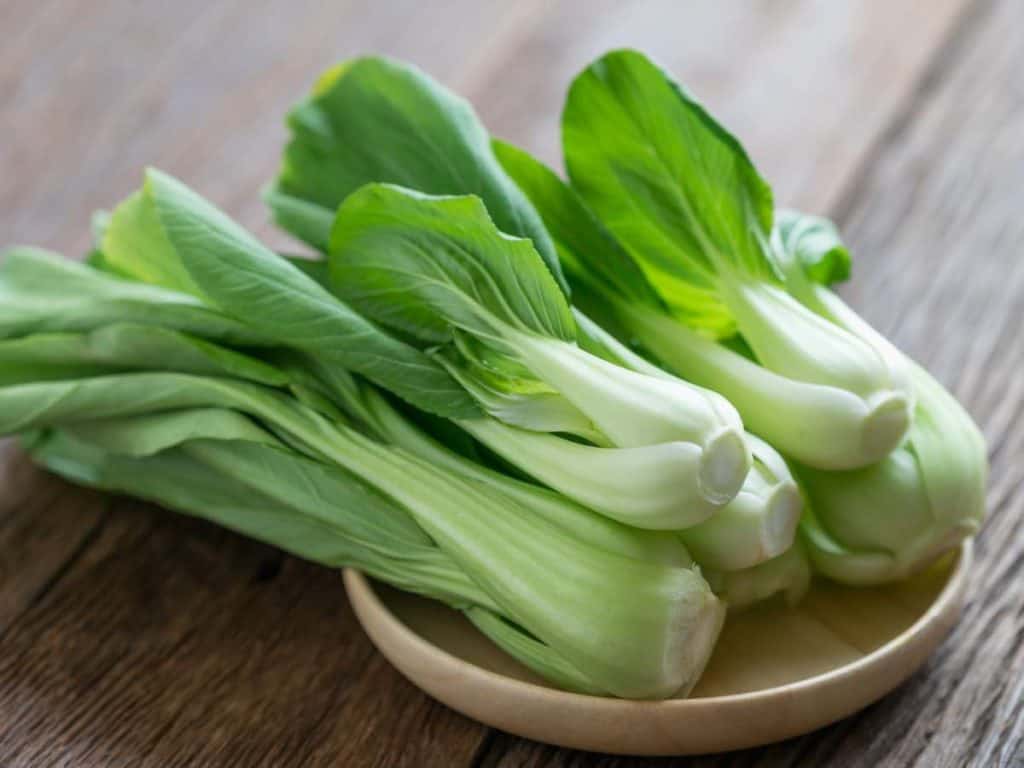
Bok Choy or Pok Choy is native to China and has long been consumed for over 1500 years. Like the aforementioned alternatives to Chinese cabbage, Bok Chy is from the Brassicaceae family which is typically known as the mustards, crucifers, or cabbage family.
Bok Choy has a slightly bitter taste and is crunchy like celery. Unlike the Chinese Cabbage, it does not have a head. Instead, it has a cluster of green leaf blades and a bulbous white stem.
Even with its crip structure, the entire Bok Choy can be eaten. It is perfect for salads and club sandwiches. It is also typically used in many Asian soups and can be stir-fried with other ingredients.
Bok Choy is especially rich in vitamin C, which helps in repairing body tissues, and vitamin K, which helps in blood clotting and building bones. Like the aforementioned, it has fiber, calcium, iron, zinc, and many other nutrients that help in keeping the body healthy and preventing diseases.
Brussel Sprouts
Brussel sprouts are tasty and easy to cook alternative to Chinese cabbage.
Brussel Sprouts are small round green vegetables belonging to the Brassica oleracea family. It has a diameter of about 1.5 to 4.0 cm. Smaller-sized brussels sprouts are sweeter and more flavorful as compared to larger ones.
These small-looking cabbages are said to have originated in Brussel, Belgium. It is said to have a nutty and smokey flavor to it, although may sometimes be bitter. It can be easily cooked as it can be boiled, sauteed, and baked.
Brussels sprouts are perfect for coleslaw, a finely sliced mix of vegetables. It can also be grilled and topped with cheese, seasoning, and spices. For better-tasting and even taste, make sure to cut the Brussel spout in half before cooking or grilling.
Brussels sprouts are rich in fiber and vitamin A, vitamin C, and Vitamin K. It also contains ALA Omega-3, which reduces the risk of inflammation and promotes heart health by reducing triglycerides. It also has antioxidants that slow cell damage caused by free radicals.
Kohlrabi or German Turnip
Kohlrabi or German Turnip is a biennial vegetable, which requires it to grow in two different seasons. Its name means cabbage-turnip, which describes its appearance. It comes from the same species as Chinese cabbage called wild cabbages or Brassica oleracea.
It has a sweet and pepper flavor and has a solid form. The bulb of Kohlrabi is within 1-3 inches in diameter, while the whole plant can reach up to 18 – 24 inches wide and 18 inches tall.
This vegetable can be grated to the salad to make fine coleslaw or salad. Kohlrabi is a versatile vegetable and can also be grilled, sauteed, baked, and eaten raw. Just ensure to peel the bulb first to get soft and crunchy vegetable meat. It is best paired with thinly sliced apples, fresh tarragon, and spices.
It is nutritious and helps support various bodily processes. A cup of Kohlrabi has about 35 calories while containing fiber, protein, vitamin C, Vitamin B6, Potassium, and more. It is good for both gut and heart health and in strengthening the immune system.
Choy Sum
Choy Sum is another leafy vegetable great for substituting Chinese Cabbage. It is also known as the Chinese flowering cabbage or chinese mustard.
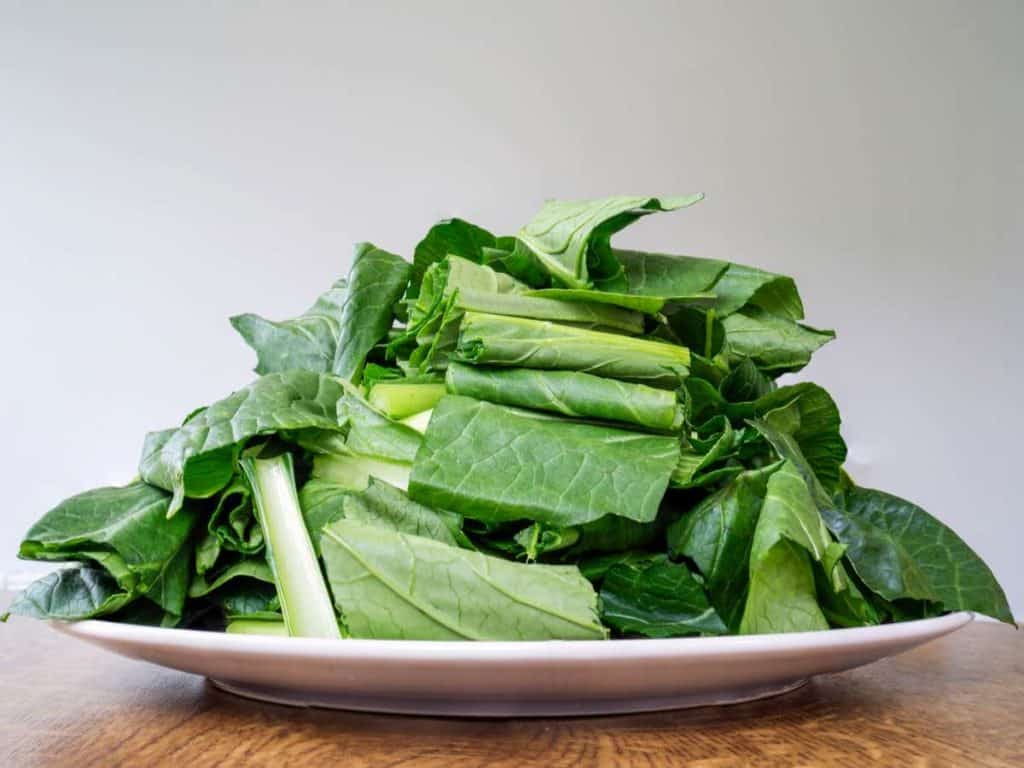
When translated from its Cantonese source, it means “heart of the vegetable”. It is available year-round, although it is at its best form during cool seasons.
Choy Sum has a mildly bitter and mustard-green flavor. Aside from its vibrant green leaves, the flowers of Choy sum are also edible. This can be eaten raw, or cooked just like the other cabbages, and is commonly pickled.
This vegetable has a storage term of about 3-7 days. The smaller sized-choy sum has a sweeter taste than the larger ones which are typically bitter.
Choy sum is rich in Vitamin A and Vitamin C and contains calcium and iron which are good in strengthening the bones. It is also rich in antioxidants and iron that help prevent cancer and iron deficiency. Its vitamins help in preventing flu-like infections and providing retinol necessary to prevent lung and oral cancers.
Choy sum can be prepared by blanching and sauteeing it with your homemade garlic sauce. Simply heat your oil and add garlic, soy sauce, and sesame oil based on your desired taste and consistency, then pour over the blanched Choy Sum.
Celery
Another good substitute for Chinese cabbage is celery. Celery comes from Apiaceae botanical family, along with carrots and parsley. It has a long stalk, which ranges from 12 – 16 inches long. These leaves and stalk of the fibrous vegetable can be eaten raw and cooked.
It is a low-calorie snack, and rich in vitamins and minerals. Some of the benefits of eating celery include lowering the risk of cancer and inflammation, managing blood pressure, and other diseases. Like the other vegetables, it is rich in Vitamin A, Vitamin C, and Vitamin K, which each respectively contributes to making the body healthier.
Celery is perfect for your morning green smoothie because of its bold earthy flavor. It can also be powdered and used as a seasoning. Celeries are good as topping for salads and can be made into a delicious vegetable soup.
Celery soup is made using olive oil, thinly-sliced celery, potatoes, vegetable stock, and milk. In a pan with olive oil, sautee garlic, and celery, then add the potatoes, vegetable stock, and milk. Wait until potatoes are soft, and finally, serve with warm garlic bread.
Celery is a delicious vegetable, but, without proper storage and blanching, celery can be bitter quite quickly. Some people also experience bloating or gas after too much consumption. Overall, Celery is a nutritious and easily available vegetable that can serve as an alternative to Chinese Cabbage
Kale
Kale is another green or purple leaf vegetable belonging to the Brassica family. It has many classifications on how it looks.
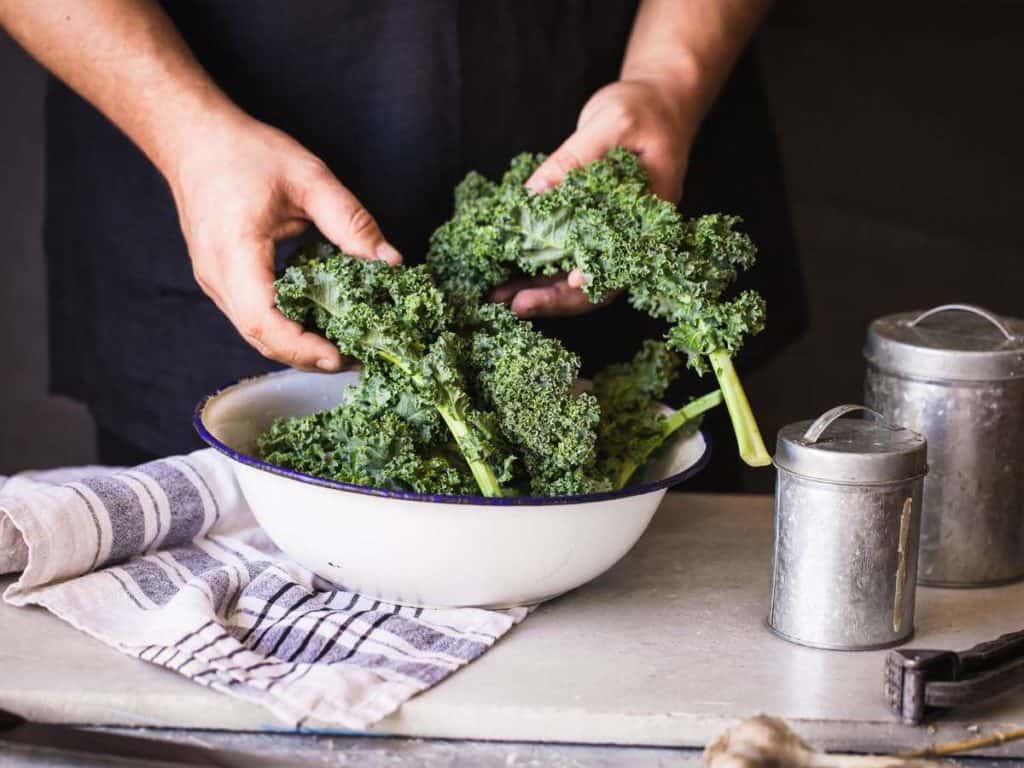
There are Kales with plain leaves like the white Russian Kale, while some have curly leaves like the scots kale. A cross of the plain and curly Kale is called a feathery-type leaf.
There are also Kales with bumpy leaves like black Cabbage and Tuscan Kale. There is also ornamental kale that has frilly pink or magenta leaves. Other notable kinds of Kale are the Siberian and Redbor which have enormous sizes.
Like Celery, Kale is a salad staple but can also be used in making healthy juices. It can be blended with a banana or a creamy texture, pineapple for a sweet and sour kick, and other fruits based on your liking. Kale can also be cooked by simply sauteeing kale with garlic and adding citrus as a flavor and spices.
It is a low oxalate content as compared to spinach and other vegetables. It is rich in vitamins and minerals that promote bone health and fight against cell damage, cancer, and diabetes. It has a good balance of Omega 3 and Omega 6 that help in ensuring a healthy heart.
Kale is also good for digestion and gut health, and weight loss. The fibers in Kale also help in detoxifying the body, whilst promoting health in many body organs.
Romaine Lettuce
While this is a quite different vegetable, Romaine Lettuce shares many physical properties with Chinese Cabbage. It has an elongated head, with a thick center rib.
Unlike the aforementioned alternative, Romaine lettuce comes from the Asteraceae botanical family. This pale-green vegetable has long leaves and a white firm center. It has a watery and sweet taste.
Like the Chinese cabbage, it is rich in protein and vitamin A, vitamin C, and vitamin K. It has carotenoids that help support eye health, and other minerals essential for body function and development.
Additionally, if you practice a ketogenic diet, which is high in fat with moderate protein and low carbohydrates, then using romaine lettuce may be a good option.
Despite being very nutritious, 1 cup of Romaine Lettuce has only about 8 calories. It also has Folate, a vitamin B, which is good for expecting mothers to prevent pregnancy complications.
Romaine lettuce is also susceptible to hot temperatures which makes it good for soup or brothy meals. It can be made into a creamy Romaine Lettuce soup, which is made using butter, onion, garlic, stock, lemon, salt, and of course lettuce.
In conclusion…
The many varieties of Cabbage and similar vegetables make it easy to find substitutes for Chinese Cabbage. Savoy Cabbage, Green Cabbage, Red Cabbage, Bocho, Brussel Sprouts, Kohlrabi, Choy Sum, Celery, Kale, and Romaine Lettuce are all healthy alternatives that can be used in baking, grilling, steaming, and cooking your favorite foods.
These vegetables also have different textures and structures that are good for specific dishes. The varying flavors and properties of these vegetables prove that there are many substitutes for Chinese cabbage.
Moreover, many of these vegetables are rich in fiber and vitamins that promote digestive health and keep the body less susceptible to various diseases. This wide array of choices makes it easy to find alternatives to Chinese Cabbage, especially when it is not in its peak season or it is not currently available in your area.


